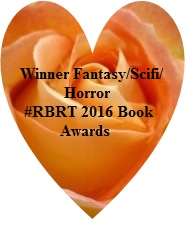Yay! I’ve finally got my HORSE TIPS FOR WRITERS properly underway 😀
You can get there either from the page of the same name on this blog, or follow http://horsetipsforwriters.wordpress.com/ directly.
So I’ll be posting these tips on here as before, but they will be more clearly categorised and not cluttered up with other topics on their own dedicated blog also.
So you think horses are unpredictable?
You’d be right.
And wrong.
Predicting a horse’s reactions, whilst by no means an exact science, is far easier to estimate when you understand a bit about horse psychology.
Fight or Flight
Horses are prey animals. In most cases this means that when they feel threatened, their option of choice is to RUN. Regardless of who or what is in the way. Despite thousands of years of domestication, this survival instinct is utterly ingrained in the species.
Under some circumstances, they may react with the fight option, often as a temporary measure prior to flight. Kicking, with either hind or front feet, spinning round, and less often, biting, can make a frightened horse dangerous in close quarters.
Bucking
Bucking is an instinctual behaviour designed to dislodge predators that jump onto a horse’s back (from overhanging trees, for example). Any type of discomfort in the back, such as an ill-fitting saddle, or an unbalanced or tense rider can cause this reaction.
Spooking
Or shying – another survival instinct, has the horse removing itself at speed from a suspicious object. This may take any form from the smallest flinch to the extreme of spin and bolt. Suspicious objects can vary from such apparently innocuous (to us) things as plastic bags, unusual vehicles, or even a patch of ground that smells or looks different to that surrounding it, to truly terrifying things like large, noisy machinery or predators. Horses do not see things (another post) in the same way as humans, so what seems perfectly reasonable to you or me may be terrifying to a horse. It’s usually better to assume that an object will cause suspicion (at best) or terror (at worst) and be prepared.
Spatial awareness
Don’t expect them to have it! Some horses are more aware of those around them than others, but they all have blind spots – like where your feet are – so beware standing too close.
Safety in numbers
Horses always feel safer in company – of other horses, that is. Bottom line – the higher the number of horses, the lower the probability of being the one that gets eaten. Dominant horses will be found towards the centre of the herd, courtesy of shoulder-barging less dominant ones to the outside, because the ones on the outside are, again, the ones most likely to get eaten.
But don’t make the mistake of thinking that a herd of horses will feel safe enough to stand still when there is a threat. Once one runs, the others go too, and when a herd stampedes – stand clear!
The effect of selective breeding
In competition horses, at least, there is a conscious attempt to breed what we call ‘rideability’ into our horses. In effect, selectively breeding out these natural survival traits. Many domestic horses are now far less unpredictable than they were – but never rely on it totally – bottom line, they are still animals and you should never take them for granted.
Any questions on horse behaviour? Or, indeed, on anything horse-related – just leave a comment below























